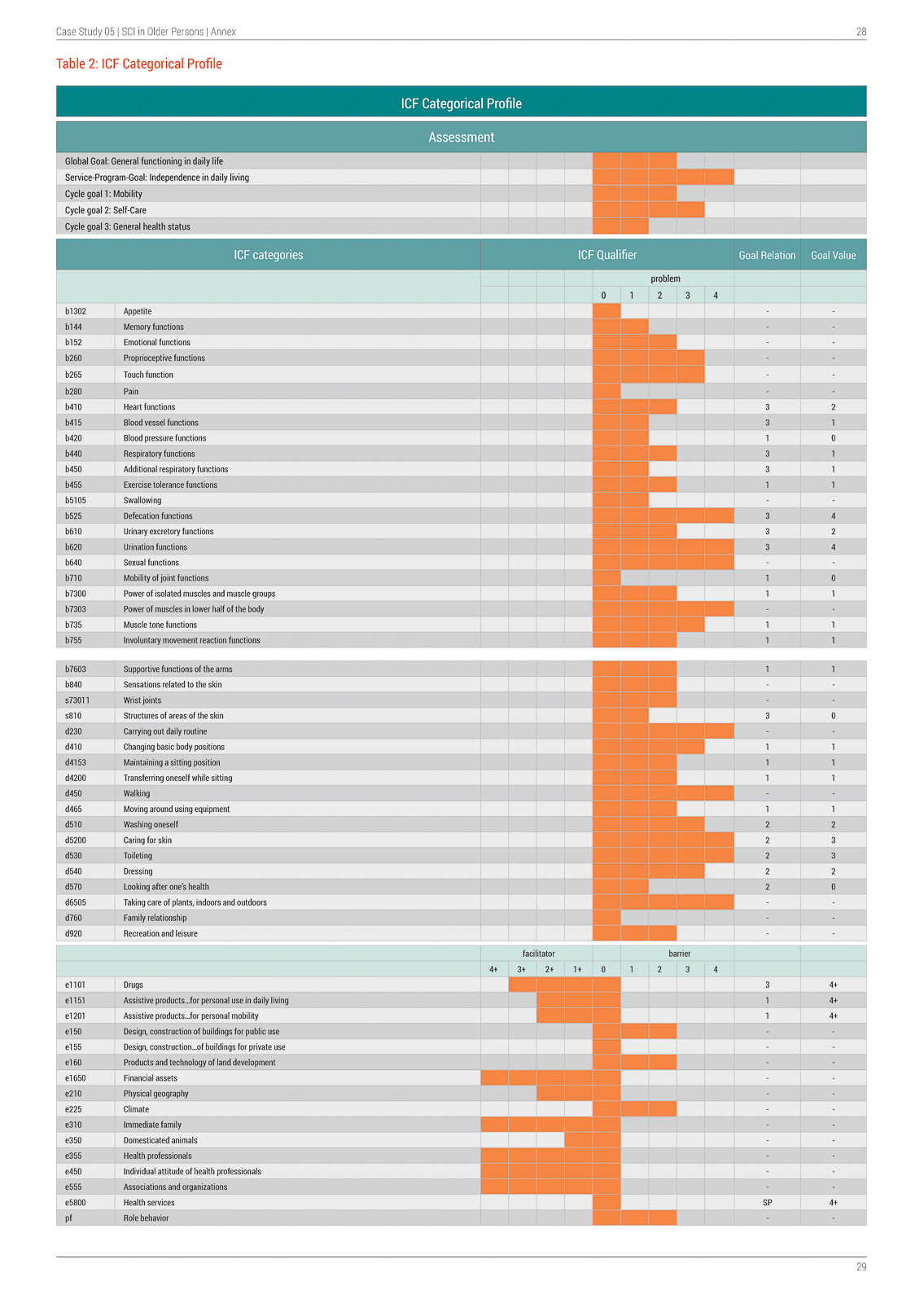Goal-setting/Determination of Intervention Targets

Based on the assessment results an ICF Categorical Profile of Mr. Meier's functioning status was created. See table 2. An ICF Categorical Profile is a visual display of ICF categories that reflect these assessment results as well as the goals i.e. global goal, service-program goal and three cycle goals, that Mr. Meier and his rehabilitation team mutually agreed upon.
As a global goal they decided to strive for adequate general functioning in daily life. Correspondingly they defined optimal independence in daily living as Mr. Meier's service-program goal.
To help achieve these broader goals, three cycle goals were set: improvement of mobility (including independent transferring and changing of body positions), improvement of self-care (including independent dressing) and general health status (including prevention of further secondary complications like pressure ulcers, respiratory infection or impairments in mobility of joint functions).

Table 2: ICF Categorical Profile; ICF Qualifier: rate the extent of problems (0 = no problem to 4 = complete problem) in the components of body functions (b), body structures (s), activities and participation (d) and the extent of positive (+) or negative impact of environmental (e) and personal factors (pf); Goal Relation: 1, 2, 3 refers to Cycle goal 1, 2, 3 and SP refers to Service-Program Goal; Goal value refers to the ICF qualifier to achieve after an intervention
Once the goals were defined, corresponding intervention targets were determined. Intervention targets were those ICF categories that corresponded to specific goals and were addressed with interventions in the Rehab-Cycle®. If an ICF category did not correspond to a set goal e.g. b1302 Appetite, it was not considered an intervention target and thus not addressed during the assignment and intervention phases of the Rehab-Cycle®.